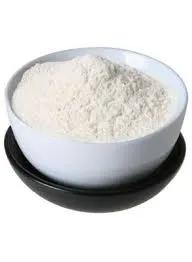
Dec . 27, 2024 08:55 Back to list
hpmc cmc
Understanding HPMC and CMC Key Players in the Pharmaceutical Industry
Hydroxypropyl Methylcellulose (HPMC) and Carboxymethyl Cellulose (CMC) are two prominent cellulose derivatives commonly used in the pharmaceutical industry. Both compounds play crucial roles in various applications, from drug formulation to controlled release systems. Understanding their properties, applications, and benefits can provide valuable insights into their significance in modern medicine.
Properties of HPMC and CMC
HPMC is a semi-synthetic polymer derived from cellulose, characterized by its hydroxypropyl and methyl groups that provide unique solubility and gel-forming properties. It is white, odorless, and free-flowing in its powdered form, dissolving readily in water to form viscous solutions. This solubility makes HPMC an ideal thickening agent, emulsifier, and stabilizer in pharmaceutical formulations.
On the other hand, CMC is another cellulose derivative that features carboxymethyl groups. It is also a water-soluble compound that forms viscous solutions but has a different rheological profile compared to HPMC. CMC is known for its ability to form gels and act as a stabilizer for emulsions and suspensions, making it an essential ingredient in various pharmaceutical and food applications.
Applications in the Pharmaceutical Industry
Both HPMC and CMC are versatile excipients used in a wide range of pharmaceutical formulations. One of their primary roles is as a thickening agent in liquid formulations, including syrups, creams, and gels. Their ability to increase viscosity enhances the stability and palatability of these products, making them more effective for patient use.
HPMC is particularly important in the formulation of controlled-release drug delivery systems. Its gel-forming properties enable it to create a matrix that regulates the release of a drug over time. This controlled release is vital in ensuring that medications are delivered at the right dosage and at intervals that maximize therapeutic effects while minimizing side effects.
hpmc cmc

Similarly, CMC is utilized in the formulation of tablet binders and disintegrants. It helps improve the overall structure and stability of tablet formulations, ensuring that they disintegrate properly upon ingestion to release the active pharmaceutical ingredient (API) efficiently.
Benefits of Using HPMC and CMC
The use of HPMC and CMC in pharmaceutical formulations offers several advantages. First and foremost, both compounds are non-toxic and biocompatible, making them safe for use in a wide range of applications. Their ability to enhance viscosity and stability contributes to the overall efficacy and safety of pharmaceutical products.
Moreover, HPMC and CMC are easy to incorporate into various formulations. They can be cold or hot processed, and their compatibility with other excipients is well established. This ease of use makes them preferred choices for formulators looking to design effective and safe drug delivery systems.
In addition, their versatility allows for innovation in drug formulation. Researchers continue to explore new formulations utilizing HPMC and CMC, aiming to develop more effective and targeted therapies, particularly in the areas of oncology and chronic disease management.
Conclusion
In conclusion, HPMC and CMC are vital components in the pharmaceutical industry, facilitating the development of effective drug formulations. Their unique properties and versatile applications make them indispensable in ensuring the safety, stability, and efficacy of various pharmaceutical products. As research and development in this field continue to advance, the role of these cellulose derivatives is likely to expand, leading to improved therapeutic options for patients worldwide.
-
Versatile Hpmc Uses in Different Industries
NewsJun.19,2025
-
Redispersible Powder's Role in Enhancing Durability of Construction Products
NewsJun.19,2025
-
Hydroxyethyl Cellulose Applications Driving Green Industrial Processes
NewsJun.19,2025
-
Exploring Different Redispersible Polymer Powder
NewsJun.19,2025
-
Choosing the Right Mortar Bonding Agent
NewsJun.19,2025
-
Applications and Significance of China Hpmc in Modern Industries
NewsJun.19,2025







